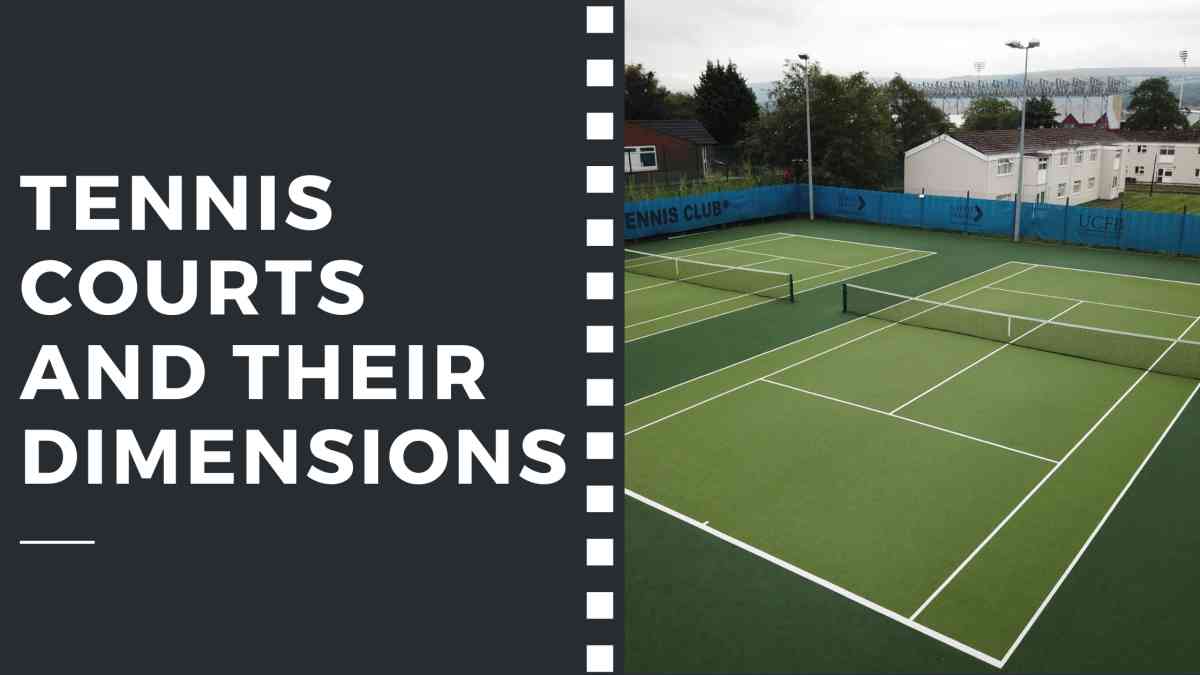Tennis is a sport that has a wide following across the world and one that draws people from all strata of society. This sport is known to have a lot of nuances to it, and the most important of them all is the dimension of the courts on which the matches are played.
Tennis is played on different surfaces across the world, with grass being the traditional platform on which it first originated. Over the years, however, clay courts and hard courts gained prominence.
Out of the four major Grand Slam tournaments, two are played on hard courts (Australian Open and US Open), while one is played on grass (Wimbledon) and one on clay courts (French Open).
Despite the sport being played on different surfaces across the world, the dimensions of the court remain the same. The dimensions only change when the category of the sport changes from singles to doubles.
As per the International Tennis Federation (ITF), the dimensions change only a tad when one alters from the singles game to the doubles one.
In this article, we will take a look at the different types of dimensions of a tennis court, which predominantly remain the same no matter which surface it is played upon.
Tennis Court Dimensions for Singles Matches
The ITF decrees that a competitive tennis court must be rectangular in shape, measuring 23.77 metres long. This is the basic feature that remains the same across all surfaces and all countries. The width of the singles match court, however, is only 8.23 metres.
This is done so that the players do not exhaust themselves by running helter-skelter. There is also only so much room that players can exploit while playing in a singles competition.
Tennis Court Dimensions for Doubles Matches
In doubles matches, the width of the tennis court increases just a tad, although the length remains the same. The width of the court expands to 10.97 metres in a doubles match.
If you were to view a tennis court from above, you would see a line marked horizontally and parallel to the court at both ends. This is called the baseline. On the other hand, you may see a vertical line tracing the length of the court. This is called the sideline.
Two sidelines are marked in a tennis court, separated by 1.37 metres. The area inside the sidelines is out of the playing area in singles matches but inside the playing area in doubles matches.
Different Surfaces in Tennis
As mentioned earlier, the dimensions of the court remain the same despite the surfaces on which it is being played changing. There are three major surfaces on which tennis is played: grass, clay, and hard courts.
Grass is the conventional surface on which tennis was originally played. It assists in good pace and carry to the players, and one also sees unpredictable bounce owing to the length of the grass in different courts. This means that players with good hand-eye coordination and patience, as well as impeccable technique, can flourish on grass courts.
Clay courts, which are usually made of crushed shale stone or brick and other unbound mineral aggregate, see unpredictable bounce and carry. Players who are fit, agile, and extremely resilient tend to end up on the winning side in matches played on clay courts.
Those who are crafty can also be expected to end up on the winning side, as playing on clay takes a lot out of the human body. It is among the most challenging surfaces to play upon.
Hard courts, which are usually artificial courts made from resin, synthetic, or acrylic layers laid on top of a concrete or asphalt foundation, provide excellent carry and bounce. Players who have good technique can flourish on these courts and get good value for their shots.
These courts offer a balanced nature, and players who have good all-round capabilities tend to succeed often here. These courts also encourage a fast style of play, although the pace is slower than what is seen on grass courts.
Read Next | ATP Tours – Explained
